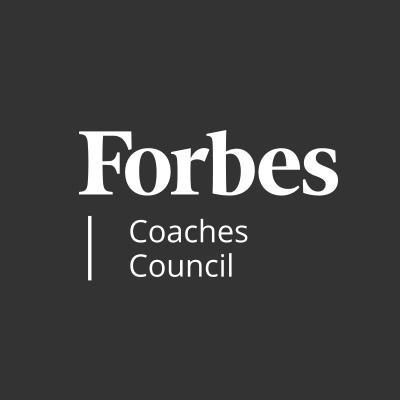Ute Franzen-Waschke, owner of Business English & Culture, is a coach who helps organizations build culture through conversations.
My writing partner, Deborah Goldstein, recently talked about the importance of breathwork in her article, "Mitigate Your Stress: It Starts With One Step And One Breath." She described how, in the space of one breath, it’s possible to choose between going down that stress spiral that raises our cortisol levels in unhealthy manners or pausing and taking a second breath to intentionally shift away from that stress curve and land where we are more in control and poised to make better decisions.
Covid-19 shifted the traditional ways we used to work. For many of us, it shifted where we work, when we work, how we work together and even the importance of work in our lives. Work is still front and center for the majority of us from an economic point of view, but the pandemic caused us to examine the price we are willing to pay when work is at the center of our lives. The workforce has become more confident in what they expect from their jobs and how their jobs either contribute to well-being or get in the way. Martin Seligman designed the PERMA model as a way to assess well-being:
• Positive emotions
• Engagement
• Relationships
• Meaning
MORE FOR YOUEmpathy Is The Most Important Leadership Skill According To Research
Why U.S. Talent Shortages Are At A 10-Year High
You Probably Need More Friends—Here’s How To Make Them
• Accomplishment
The idea is that if at least one of the five building blocks is in place, chances are high we are feeling well. Before the pandemic, organizations' approach to well-being—what we'll call "Well-Being 1.0"—often focused on:

• Mindfulness. Corporations helped employees unwind and become more ‘aware’ or ‘mindful’ about their physical and personal needs with things like at-work mindfulness rooms, gyms and yoga sessions.
• Inspiring working conditions. Employers ditched traditional cubicles to create generously equipped workspaces that allowed for work and play. The goal was to spark higher levels of engagement by bringing people together, infusing positive emotions and allowing for more variety in where and how tasks were completed.
• Burnout prevention. Organizations educated staff and leaders to recognize early signs of burnout, encouraging mindfulness and inspiring working conditions to counterbalance stressful situations around deadlines and the varied challenges in the workplace.
"Well-Being 2.0" was coined long before we imagined a pandemic impacting our personal and professional lives and was the result of a variety of factors, including the rise of technology and its everyday use, the increase in uncertainty in the workplace and quicker turn-around-times in product launch cycles. Well-Being 2.0 focused on the healthy use of technology and social media, workplace security and work-life balance.
Now, as we slowly but steadily approach post-pandemic times, we may see "Well-Being 2.1," in which the three dimensions—the use of tech, workplace security and work-life-balance—will be re-defined. Let’s take a more granular look at two of those three dimensions: use of technology and work-life balance.
The use of technology is synonymous with meetings in this current workplace environment. The average Microsoft Teams user spends 252% more time in meetings than before the pandemic according to a Microsoft study. What are the repercussions of too many meetings? How do these negatively affect our well-being? And how can we mitigate and minimize this impact?
Stressor One: Multi-Tasking
Does your work-life balance suffer because your work day is lacking structure and you feel you have to multi-task? If this is a stressor, take a breath and establish clearer boundaries for what is work and what is private in your schedule when working from home.
1. Observe your existing habits. What habits have you developed over the last two years? Which are healthy and which are not so healthy? Be honest! Are you spending your breakfast or lunch breaks in front of your computer? Are you joining telephone conferences from the car while taking the kids to school or picking them up from school?
2. Intentionally block off time for breaks. Set aside time in your office calendar for breakfast and lunch breaks. In the past you may have met colleagues in the office and had lunch together. Nobody was tempted to schedule a meeting at that time because you were out for lunch together! It's important to now make that commitment to yourself.
3. Be present. In your role as a colleague or boss or parent, be in the moment. Your peers, direct reports and kids all deserve your full attention.
Stressor Two: Virtual Fatigue
Are you spending your days in back-to-back virtual meetings? If this is a stressor, take a breath and revisit how you approach meetings.
1. Make it a habit to intentionally end your meetings five minutes early. When leading meetings, work to consistently end five minutes before the top of the hour or five minutes before the half (technology can help). Prime your colleagues for this new habit and explain why this is important—for you and for them! Research shows this small buffer helps your brain reset and destress.
2. Push back against the adage that work expands to the time allotted. Allow meetings to be over when they are. When your mission is accomplished, reward yourself with an extended break and then move on to the next item on your to-do list.
Five or 10 minutes of downtime can already make a big difference in your stress levels and your well-being. The question then becomes how to best use those minutes—and that’s what we will explore in our next article.
This article is part of an ongoing series with fellow Forbes Coaches Council member Deborah Goldstein, founder of DRIVEN Professionals.
Forbes Coaches Council is an invitation-only community for leading business and career coaches. Do I qualify?




